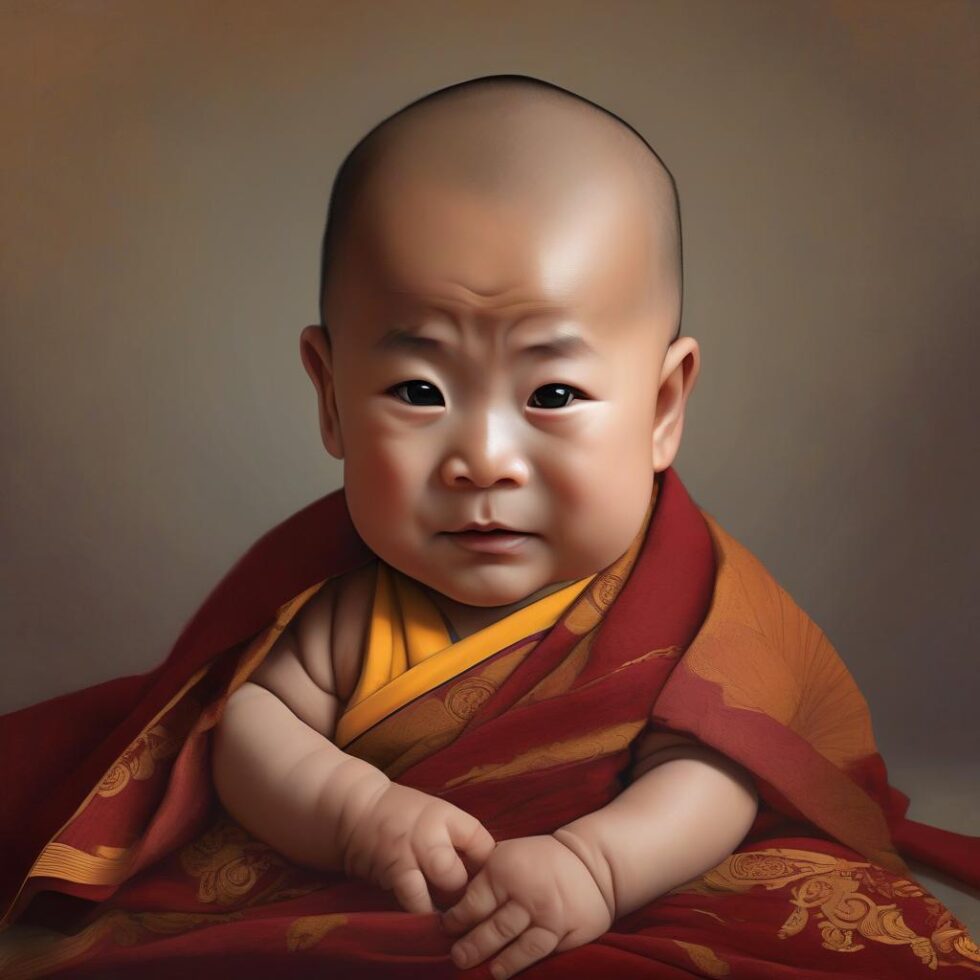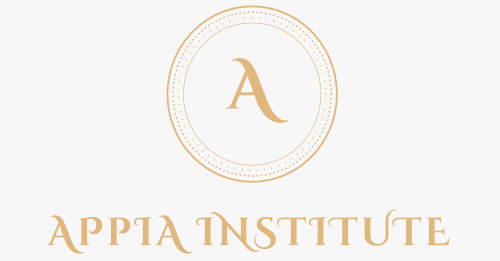
When asked about the Dalai Lama fleeing to India from Tibet in 1959, Mao allegedly said: “Better in India than in the USA.” He was surely right then. Now, 66 years later, the 14th Dalai Lama is 90, and the choice of his reincarnation can become a very sensitive international affair.
The key issue is where the next Dalai Lama will be born. It could be a barrier higher than the Himalayas between Beijing and New Delhi. His birthplace will decide who hosts the next Dalai Lama—China or India? China will clearly intervene in the choice. India, conversely, proclaims neutrality regarding the esoteric process.
It is likely that upon the death of the 14th Dalai Lama, Lamaism will split into two, with one faction having a Dalai Lama in India and another in Beijing. Moreover, it’s possible that despite the Beijing orders, many Tibetans in China will worship the ‘Indian’ Dalai Lama, and not the ‘Chinese’ one. India and China make up over 40% of the global population.
For Europe, it’s akin to the old history of Popes and anti-Popes. Here, it’ll be about the Dalai Lama and the anti-Dalai Lama. At stake is a moral high ground in Asia and the world. (see also my book here)
The 14th Dalai Lama has said he will reincarnate in India, and his fellow Tibetans, who followed him out of Tibet, will comply. On the other side of the mountains, Beijing is poised to select its Dalai Lama using the controversial procedure of the Golden Urn, a test the exiled Tibetan community rejects.
India’s former top diplomat, Nirupama Rao, carefully raised the issue (see here).
She pointed out there is a duality: “between a moral responsibility to a people it sheltered and a geopolitical calculation to avoid provoking Beijing… If, as expected, the next Dalai Lama is born in India, the country will become caretaker of the lineage. The young reincarnate’s education, his monastic training, his symbolic authority— all of it will unfold on Indian soil. India may say little. It may issue no declaration. But it will be, in every meaningful sense, the ground on which the Tibetan tradition stakes its future. In Tibetan Buddhism, the bardo is the space between lives—a liminal zone where the soul hovers, waiting. Tibet has lived in that state since 1950. The Dalai Lama’s succession may now decide: rebirth or quiet erasure. If reborn in India, the country becomes guardian, not by geopolitical declaration, but by quiet dignity, by stewardship of a sacred tradition.”
There are many elements to unpack.
Popes and Anti-Popes
The history of the Catholic Church has elements that shed light on this complex subject, where religion and politics are intimately intertwined. It runs almost in parallel with the history of anti-Popes. The first anti-Pope, Hippolyte, came in 235, a whole century before Constantine (d. 337), the first Roman emperor to convert to Christianity in 312. After Hippolyte, there have been dozens of anti-Popes, some inconsequential, many at the center of bitter disputes between earthly powers and the Holy See.
The authority of the Pope in the city of Rome and Europe emerged from the decline of the Emperor’s power. Rome, left to its own devices after many sackings and the fall of the Western Empire in 476, saw the Popes stepping in and taking care of the city. This practical move granted the Pope undisputed political power, which gave him political independence from the kingdoms of the time. This independence was consolidated in two steps:
The first was Charlemagne’s coronation in 800. It granted religious and imperial Roman legitimacy to a barbarian kingdom, creating a favorable environment in parts of Europe for the spread of Christianity. The second was the Donation of Constantine, a document forged perhaps shortly before the coronation, which legitimated the Pope’s power over Rome.
On this basis, the first real conflicts emerged with the Holy German Emperors, who wanted to have the choice of count-bishops. It was crucial for the Empire because, unlike other counts, bishops could not marry and thus could not pass their titles and lands to their children. Upon the bishop’s death, the title and land would revert to the emperor, who could dispose of them as he saw fit—rewarding loyal vassals. Conversely, “lay” counts would pass their titles and lands to their children, allowing them to expand their power and challenge imperial authority. Therefore, if the Pope chose his count-bishops, it would have a direct impact on imperial governance.
The emperor also employed priests as administrators, often with their agendas, not always aligned with Rome. These controversies lasted centuries. However, during this phase, no one challenged Rome’s authority as the seat of the Pope.
A second phase occurred at the end of the 14th century when Popes were chosen in Avignon, France. Later, in 1409, there was also a Pisan Pope. The issue then was the overall supremacy dynamics in Europe. France, a rising power on the continent, sought to exert its influence over the Papacy, while the strong Italian republics and the Holy Roman Empire opposed this encroachment. This turmoil subsided after about fifty years.
These conflicts were about power—who should decide which men held office—and about control over Europe. But they were also about religion: the limits and content of belief, the relationship between the Pope and his flock, which included both aristocrats and ordinary people with little to lose. It was both efficient and deeply mystical, with very sophisticated theological disputes providing an overarching framework. Perhaps it was akin to the Dalai Lama’s choice of reincarnation.
The Birth of Lamas
Tibet was culturally within the Indian world. Its script is derived from Sanskrit, unlike places like Korea, Vietnam, or even Japan within the Sinosphere. Possibly, the title of the Dalai Lama was created in the late 16th century by the Mongol leader Altan Khan. He supported the Geluk sect, the most recent of the four Tibetan schools vying for dominance.
The exchange between the Dalai Lama and the Khan bore a resemblance to that between the Pope and the Emperor—mutually supporting one another. However, neither the Mongols nor other outsiders gained a significant foothold in Tibet. The region’s rugged and inhospitable terrain made sustained occupation difficult.
The process of selecting the Dalai Lama’s reincarnation was then carried out independently by the lamas. In 1792, Emperor Qianlong of the Qing dynasty established the “Golden Urn,” a new and final test for the Dalai Lama’s reincarnation. Its purpose was clearly to mark the imperial role in choosing Tibet’s spiritual leader.
Max Oidtmann, in his recent book Forging the Golden Urn: The Qing Empire and the Politics of Reincarnation in Tibet (see here), writes:
“Qing officials did have an impact on Tibetan society, and it was in the interest of many Tibetan elites to ensure they did. Conversely, many thousands of Tibetans—primarily Buddhist monks—traveled into China during the Qing dynasty, influencing Chinese culture and politics. It was in the interest of many Chinese, Manchus, and Mongols to maintain the influence of these monks. The Qing never completely monopolized the flow of information in Inner Asia, nor within the Geluk school itself. Yet they created an impressively efficient communication system: in 1793, news about the Golden Urn, dispatched at a rate of about 600 Chinese li (roughly 300 km) per day, could reach Beijing within 30 days or less.”
But why did the Golden Urn start then and not earlier, especially given that the Qing claimed suzerainty over Tibet for about 150 years by that point?
We know that, by that time, the Jesuit mission in Beijing had ended after two centuries. Qianlong was involved in mediating disputes among different Catholic orders in China, engaging in a well-documented dialogue with the Papal Legate Maillard de Tournon, as outlined in Zhang Rui’s book (see here).
Issues at stake were complex, involving the Pope’s role, imperial authority, and conflicts among Catholic orders. Ultimately, religious tensions escalated, leading to the withdrawal of the Catholic mission in China. This demonstrates that Qianlong, who was quite religiously inclined, understood the importance of establishing a hierarchy between imperial and spiritual authority—he, after all, was the “Son of Heaven.”
In addition, in 1774, George Bogle led the first documented English mission to Tibet, dispatched by Warren Hastings, Governor-General of Bengal. The mission aimed to establish trade and diplomatic ties with Tibet, primarily through the Panchen Lama, the second-highest religious figure in Tibetan Buddhism. In 1792—the same year the Golden Urn was instituted—came the Macartney mission to China, which sought to open China to British trade.
Altogether, it’s likely that Qianlong sought to affirm that Tibetan Buddhism should respect the Chinese Emperor, and that Western encroachments—particularly Britain’s—should be thwarted to affirm Tibet’s subservience to Beijing. The Dalai Lama, who was enjoying Beijing’s patronage, was on his side.
The Differences
The difference with the Catholic Church remains enormous. The Holy See lost its Papal States in 1870. In 1929, it renounced the rule over the city of Rome, which was the capital of another state, Italy. Italy, in a certain sense, limited the power of the Church while being influenced by it. For 15 centuries, the Church was the political center of Europe, alongside the Holy Roman Empire. Its political demise came after a sustained effort by several rising nations to do without the political meddling of the Emperor or the Pope. Now it’s the largest unitary religion in the world, with communities in every country and 1.4 billion faithful.
Lamaism is a far cry from this in history and influence. The Dalai Lama formally relinquished his political power on March 10, 2011, but a Tibetan government in exile still exists. The government in exile creates a permanent wound with Beijing, which doesn’t recognize its authority over Tibet. Here is a special rub. Tibetan Buddhism is grounded in a territory, which some of its lamas still claim they have the right to rule. The Pope, although ruler of Rome, was always head of a universal faith.
Moreover, Lhasa, the seat of the Dalai Lama’s power, is not the capital of China, unlike Rome, the seat of the Pope and the Italian President. Today, there are between 14 and 20 million Tibetan Buddhists worldwide, perhaps evenly split between China and abroad. There are approximately 500 million Buddhists globally, accounting for only 7% of the total population. However, these numbers underestimate the global reach of Buddhism and the stature of the Dalai Lama, the hierarchical head of a unitary Buddhist branch.
Tibet is firmly under Chinese rule, but Tibetan Buddhism remains deeply rooted in a region it has governed for centuries. Tibet’s role as a crossroad of Asia and the home of the Dalai Lama symbolizes the ongoing struggle to claim a moral high ground across the continent.
A complicated precedent for the future Dalai Lama dispute exists: the current Panchen Lama was chosen by Beijing in 1995. China recognized Gyaincain Norbu as the 11th Panchen Lama, overriding the Dalai Lama’s earlier recognition of Gedhun Choekyi Nyima. The Dalai Lama had identified Nyima in May of that year. Beijing, until then, liked Nyima best. But as the Dalai Lama announced him, Beijing changed the candidate and picked Norbu. If Beijing had stuck with Nyima, it could have been understood as if the Dalai Lama’s authority was greater than Beijing’s.
When the Dalai Lama refused to accept the final Golden Urn test, China dismissed his selection, citing the legal and historical right to choose the Panchen Lama. Shortly afterward, Nyima and his family were reportedly put under “China’s state protection.”
Despite managing to impose its Panchen Lama, Beijing has not succeeded in eradicating popular devotion to the Dalai Lama due to these controversies. Paradoxically, even many ordinary Chinese—who are not Tibetan—hold deep respect for him. Tibetan Buddhism is closely related to Zen Buddhism, the largest religion in China, and is often more accessible to the general population than Christianity. However, Zen does not have a figure as prominent as the Dalai Lama, who draws many people to him as a spiritual leader seeking answers. This explains why his influence remains strong both in Tibet and among Chinese Buddhists.
Stubborn religions and India
China hopes that a process heavily managed by the government will produce a Dalai Lama who can help govern Tibet. Indeed, an “official” Dalai Lama endorsed by Beijing may hold influence, but it might remain controversial within China itself. After all, Lamaism is a religion; and if the living god of this tradition says he will reincarnate in India, how can the Party—or any earthly authority—claim greater legitimacy over his statement?
Unlike the situation with the Panchen Lama, where Tibetans had no alternative—since the second Panchen Lama had been taken away from public view—there will be an alternative: an Indian Dalai Lama.
Although 90 the 14th Dalai Lama could live a few more years. After that, the candidates to become the Dalai Lama will need to be born, grow up, be selected, and assume their religious role. It’s a process that could last a couple of decades. That’s a long wait for the Chinese authorities, and by then, both Tibet and the world will have changed. Beijing’s extensive infrastructure projects have already disrupted the traditional Tibetan way of life.
Beijing bets that the new generation will be less reliant on religion. Furthermore, the rivalry between the two Dalai Lamas—one in Tibet, one in India—could potentially be manipulated to control Tibetan affairs for a few years or even decades.
However, past emperors and kings challenging Rome’s Pope ultimately lost their struggles. There are reports that the number of monks and pilgrims has increased significantly in recent years. Economic development and welfare measures introduced by Beijing have alleviated the hardships faced by many workers and herders. Those who no longer needed to toil sought refuge in monasteries. The number of Tibetan monks is higher than it has ever been in history.
At the same time, the spiritual landscape of Tibetan Buddhism has evolved considerably. Thanks to large donations from Chinese private citizens seeking redemption, many monasteries have expanded, and practices have become more open — moving away from the secretive, esoteric traditions that dominated 66 years ago. This evolution mirrors changes across the globe, affecting every religion.
All these factors underscore the need for China and the Dalai Lama to begin negotiations soon to find a form of compromise. Yet, mutual distrust remains high.
Tibetan Buddhism has transformed dramatically over the past decades. Once, it was the religion of an expansive territory called Greater Tibet. Now, it has become a global faith, admired in Hollywood (the global cultural hub) with its spiritual headquarters in Dharamsala, the Tibetan Avignon.
In two decades, internal schisms within Lamaism—within Tibet and outside—are likely to emerge. One faction may claim to be more traditional than the other. The Tibetan exile community might emphasize its pure spiritual lineage, while the Lamas within Tibet could highlight their rootedness in the “holy land” of their religion.
A crucial remark by Ambassador Rao highlights one potential scenario: “If the Dalai Lama is reborn in India, the country becomes its guardian—not through geopolitical declaration, but by quiet dignity, through stewardship of a sacred tradition.”
It is unlikely that India will use the Dalai Lama as a means to pressure China. It never did, and there are presently no reasons to do it now. But there is something more subtle at stake. Hosting the Dalai Lama, a figure recognized worldwide, alongside another, more controversial one in China, gives a different spin to bilateral ties. India, no longer a developing country like it was in 1959, could emerge as the unseen winner in this religious and political game by doing almost nothing.
Western or Christian-majority countries are unlikely to be suitable places for such a role. India’s deep historical connection to Buddhism and its spiritual heritage—once the birthplace of the religion—would provide a robust cultural and moral foundation for hosting a future worldwide influential Dalai Lama. Mao’s statement could be reversed.
Nevertheless, how India chooses to handle this wild card remains uncertain. The present government, headed by Narendra Modi, is promoting Hinduism as a cultural-religious unifier for the otherwise very divided country. Hosting the Dalai Lama, assuming his “guardianship,” would entail greater acceptance for other religions, such as Buddhism. Without a new spirit of tolerance, the Dalai Lama could remain isolated both within the country and globally. This could fit with Modi’s programs.
Yet the 14th Dalai Lama was an Indian guest. He went there as an adult and, for decades, strove to return to Tibet. The new Dalai Lama will be born in India and may have no genuine desire to go to Tibet, a place he will know only from the books. Dynamics could be very different, regardless of the Indian government’s intentions.





